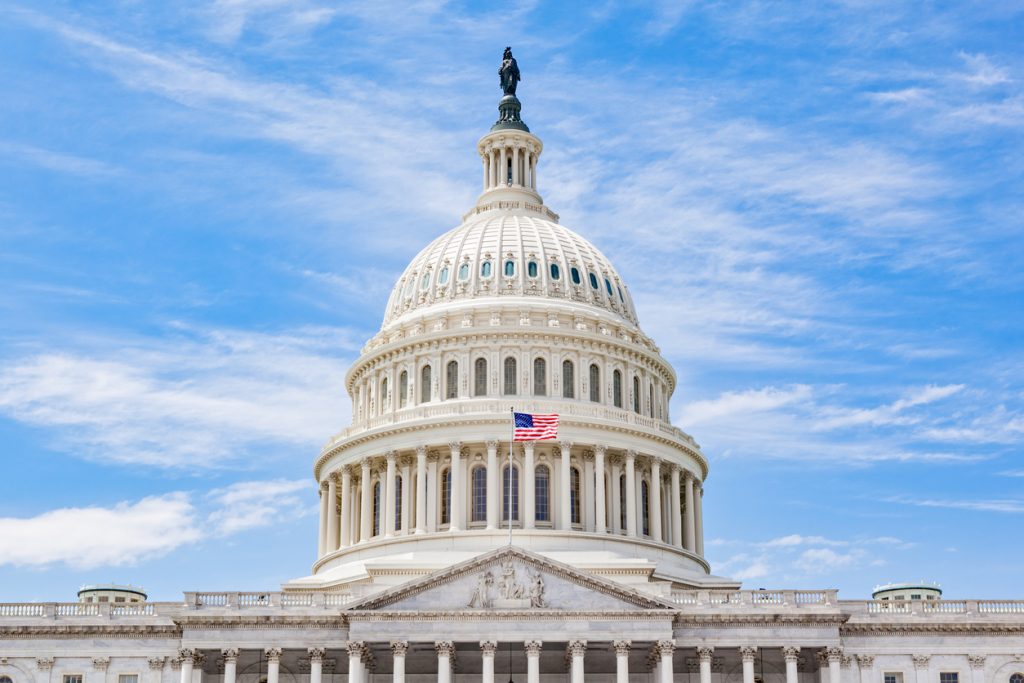
When your organization is planning its Government Relations strategy, you cannot overlook the effectiveness of planning a Hill Day. As we’ve previously written, before the pandemic changed the way lobbying and government affairs operate, Hill Days took a lot of work and effort to plan. With the shutdown of Congress and most state capitols over the last two years, many organizations were forced to cancel 2020 and 2021 Hill Days. However, legislatures never stopped legislating and have begun opening back up to the public. The need to provide legislators with the information they need to make informed policy choices remains paramount. Many organizations were quick to adopt virtual Hill Days, which could become a preferred way of conducting Hill Days until the pandemic is totally abated or even longer. Here are your tips for success in planning a Hill Day!
How has COVID-19 Impacted Lobbying?
Over the last two years, traditional lobbying and advocacy have changed due to the spread of COVID-19. In-person meetings with lawmakers and their staff members have dwindled, while digital meetings, emails, and conference calls have skyrocketed. For example, prior years’ conferences or Hill Days have now transitioned to Zoom, Skype, or Microsoft Teams.
What is a “Hill Day”?
Traditionally, a “Hill Day” refers to a day organized for advocates from an organization to visit state capitols or Washington, D.C., to meet with lawmakers, staff, or other key decision-makers.
Non-profits, business associations, advocacy groups, local government associations, trade groups, and others have their reasons to organize virtually or travel to their state Capitol or D.C. A Hill Day, virtual or in-person, can be a vital tool to maintain relationships with a state government or the federal government.
Can I Organize a Virtual Hill Day?
You absolutely can! While you might not be able to experience the usual pomp-and-circumstance associated with visiting Capitol Hill or your state capitol, you can schedule virtual meetings or conference calls with lawmakers or their staff. You also do not have to worry about getting lost in the Capitol with a virtual Hill Day!
Where Do We Start?
You must first begin by deciding whether it’s appropriate for an in-person or virtual Hill Day. Then, you should work on identifying the issue area most relevant to your organization. The state or federal government, in some way, affects your mission. Your leadership must determine the goal of your in-person or virtual Hill Day.
Can you educate lawmakers on the effects of a piece of legislation? Can you explain to lawmakers how COVID-19 has impacted you? Will an amendment to an existing bill help or harm your organization? Do you have a legislative proposal that you would like to see introduced in the legislature? Is a grant program that funds your organization’s work at risk of being eliminated? Is there funding available from any of the recent federal relief bills that could help your organization?
These are all critical questions that you must ask and answer when determining your objectives.
We Have Our Goals – What Next?
For example, your organization would benefit from the legislature adding an amendment to a piece of legislation. Build out your list of targeted lawmakers. These lawmakers will have something in common – they are from a state or region, they sit on a committee of jurisdiction, or represent districts relevant to your organization. You should find the commonality that best supports your amendment.
Once you have identified your target lawmakers, you should look internally at your organization to find your best advocates. This is a crucial step; these people will directly carry your organization’s message to lawmakers and staff. Again, the key here is finding common bonds, whenever possible, between your advocates and your targeted lawmakers. Often it is best to find a constituent from a lawmaker’s district or someone who has a personal connection with the district or the member. This is not a requirement, but it certainly lends a more powerful voice to your message. Once you have built your target list and have a sense of who your advocates will be, it is time to begin planning the organization of your Hill Day.
Scheduling Meetings for your Hill Day
Timing is essential. Are your state lawmakers in session? Is Congress in session? You can check ahead of time to find out when your lawmakers are either at the Capitol or working remotely during their session. Legislatures in different states have session information available on their websites. For example, you can find Ohio’s session schedule here or Pennsylvania’s session schedule here.
Some states have called for special legislative sessions that lawmakers had not scheduled initially. It is crucial to monitor your state’s legislative session calendars and the federal House and Senate calendars when determining when to schedule your lobby day. However, virtual meetings can allow for some flexibility here.
With a date selected, about six weeks to a month out, you should begin reaching out to your targeted lawmakers’ staff to schedule your meetings. If your Capitol is not open to visitors or the lawmaker you are reaching out to is not meeting in-person at the time, make sure you have all of the call-in information available and ready to send out for when you hear back.
You may be able to schedule a meeting with your lawmaker, but this will not always be the case. In many cases, you will likely initially meet and speak with staff rather than the member. Lawmakers at both the federal and state levels rely heavily on their staff for policy advice and information because they cannot be in each meeting personally, nor are lawmakers experts in every policy area. Legislative staff can be an essential ally to you and your organization. You should treat these meetings as if you are meeting with the actual legislator. Do not think your time has been wasted if you do not get a full meeting with a lawmaker.
Logistics for your Advocates & How to Organize a Meeting
For your Hill Day to be a success, you should plan as much as possible for your advocates. The less they must worry about the coordination of their trip or virtual experience, the more time they can spend focused on your messaging, and the more effective they can be.
Virtual Logistics
If you are organizing a Zoom (or other virtual) call with your lawmaker or staff, ensure everyone has all the call-in information ahead of time and include everyone on the invite list. You should also consider the issue of time zones. Suppose someone is participating from Texas in a virtual call with a congressional staffer in D.C. In that case, you need to make sure zone differences are accounted for when scheduling.
Also, remember – technology can sometimes fail or be challenging to deal with. If a server is down or there are technical difficulties with a video call or conference, have a backup plan in mind. It is crucial to have a backup, standard audio conference call line available that can be instantly sent out to all participants. If you have advocates planning to call in, you may want to set aside some time in the days leading up to your call to make sure they fully understand how to use the program.
Most importantly – if you are on a video call or conference call and are not the one talking, make sure participants mute microphones to eliminate background noise.
Next – even if you are not physically at the Capitol, you should still dress professionally. Dress as if you were in the Capitol, but maybe you can customize your attire with gym shorts or sweatpants since that will not appear on screen!
In-Person Logistics
Meeting Location & Materials
Given the sprawling nature of the Hill in DC or your own state capitol, you must designate a time and location to meet before your first scheduled meeting. This will give everyone a chance to pick up their materials and schedules, as detailed below, and is an opportunity for you to provide any new information or intelligence to your advocates before they begin their meetings.
The specific materials relevant to your effort may vary, but there are a number of items that are universally important:
- Map of the Capitol
- Contact information for your designated organizer
- A schedule of meetings and which advocate will be attending
- Any briefing materials your advocate may wish to review ahead of an individual meeting
- Informational materials for your advocate to leave behind after the meeting
- Any other collateral you wish to provide – buttons, stickers, pins etc.
Regardless of what your specific hand-outs are, they should be pre-assembled, packaged and ready for distribution to your advocates.
Lodging
Especially for those advocates traveling long distances, it is important to secure hotel rooms in advance of your trip.
Dining
This may seem like a secondary concern, but it is key to have a plan ahead of time for both dinner the night before, and for lunch during your day on the Hill. Your state capitols may have cafeterias inside them, and the U.S. Capitol has cafeterias in the Capitol Visitor Center, as well as in the House and Senate office buildings.
What if I Am Allowed Inside the Capitol?
Ensure you know the current restrictions, if any, if you are at the Capitol in D.C. or your state capitol. Pre-COVID, it may have been easy for advocates and lobbyists to stop by lawmakers’ offices unannounced, whether to talk to a staff member or drop off information. Now, some offices have closed to visitors at some point over the past few years to prevent the spread of COVID-19. As such, make sure to call ahead and know what precautions each office is taking. The Capitol itself may be open to visitors, but individual lawmakers may choose to close their offices to visitors. As such, do not forget to send along any handouts or brochures in the form of PDFs ahead of your virtual meeting!
Advocate Feedback & Intelligence Gathering
In addition to providing your advocates with the opportunity to share your message with lawmakers, Hill Days can also be an essential source of intelligence for your organization.
It is crucial that your advocates not only speak but also listen in their meetings, virtual or not, with lawmakers and staff. These meetings can often guide a lawmaker’s position or thinking on an issue, perhaps giving your organization insight it had previously lacked.
Providing your advocates with the ability to log notes from their meeting, whether through an electronic or paper form, is the best way to collect this vital information.
Post-Hill Day Press Releases & Social Media Posts
Sharing the success of your Hill Day, virtual or not, via social media and a press release gives your organization another chance at communicating your message and demonstrate that you are an active and educated participant in government.
Thank You Notes & Emails
The best time to send Thank You Notes to legislators and staff is within a week of your Hill Day. Not only is it polite to send a Thank You, but it also reminds them of your issue and will jar them to act on any follow-up that came from your meeting. Thank You emails are recommended, particularly during the pandemic. With lawmakers and their staff often working remotely, the best way to reach them during this time is via email.
Wrap-up and Analysis
Once your meetings have concluded for the day, it helps to regroup with an internal virtual call to give everyone a chance to share any particularly interesting or valuable information they learned from their meetings. Before you know it, it will be time to begin planning for your Hill Day!
Duane Morris Government Strategies is here to help you succeed at every step of this process and make sure you know how to organize a Hill Day. For more information, please contact us at emartins@dmgs.com or 609-577-3687.
Latest News
As legislative sessions kick off across the country, advocacy professionals must navigate diverse political landscapes, shifting priorities, and fast-moving policy developments. In this episode of Back in Session, hosts Ryan Stevens and Ryan DeMara sit [...]
Photo credit: iStock.com/hapabapa As the year draws to a close, state legislatures across the country are gearing up for their upcoming sessions in 2025. A critical aspect of this preparation is state legislative prefiling, a [...]
In this episode of the Back in Session podcast, hosts Ryan Stevens and Ryan DeMara sit down with Terra McClelland, President of the State Government Affairs Council (SGAC) and Vice President of Government and External [...]
Photo credit: iStock.com/Pavel Muravev Following the 2022 midterm elections, Democrats hold veto-proof majorities in both legislative chambers in nine states, compared to 18 for Republicans. In a state’s checks and balances system, [...]

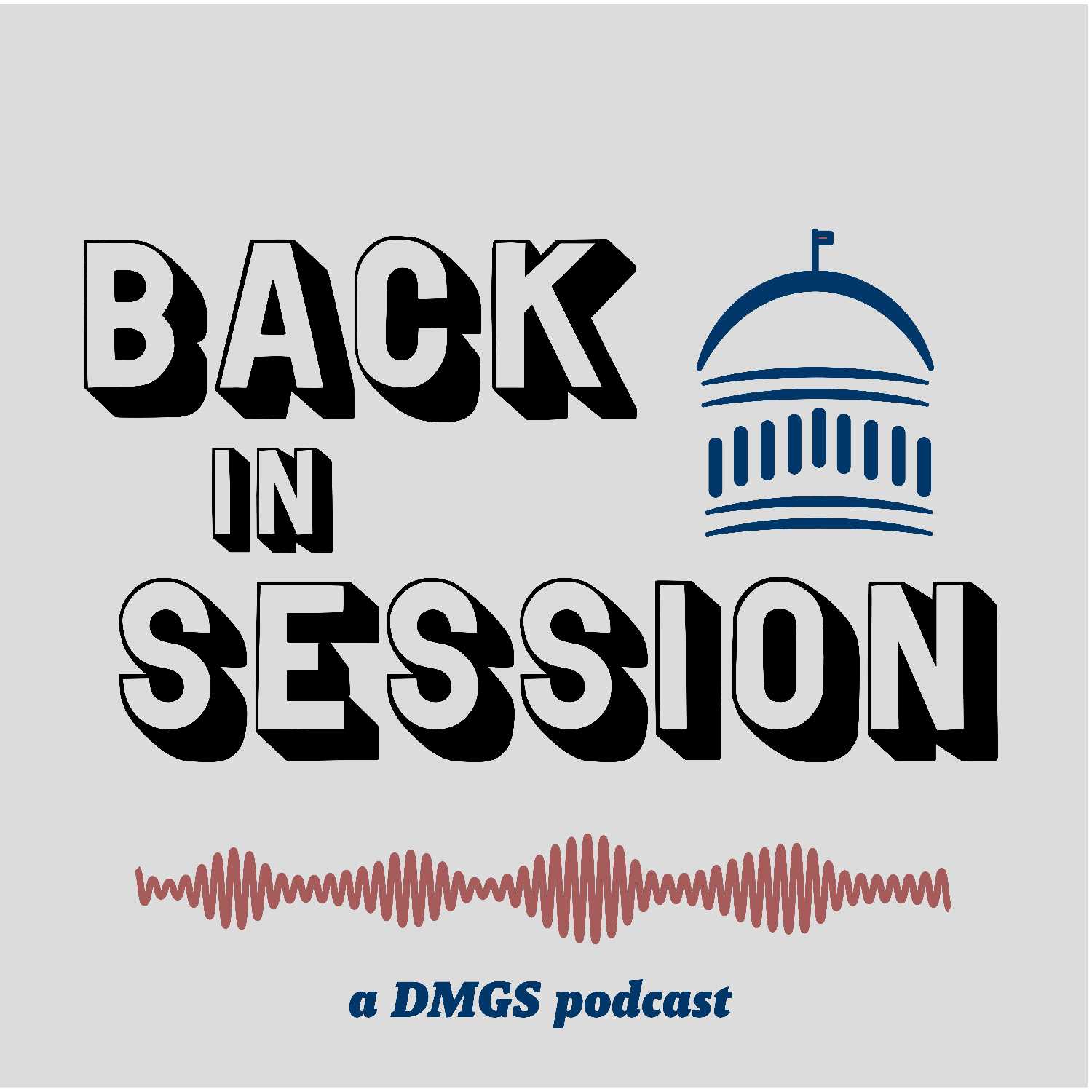
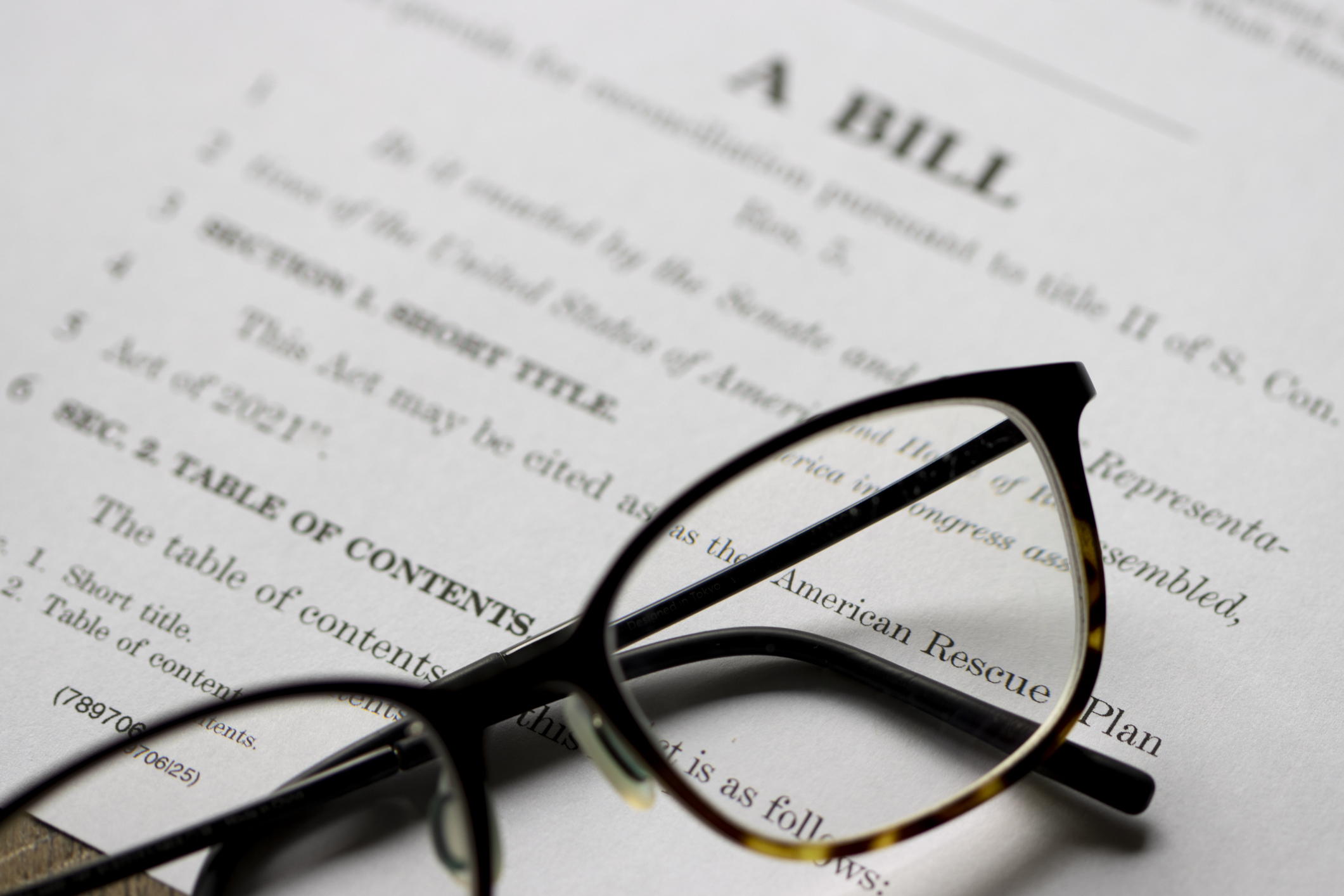
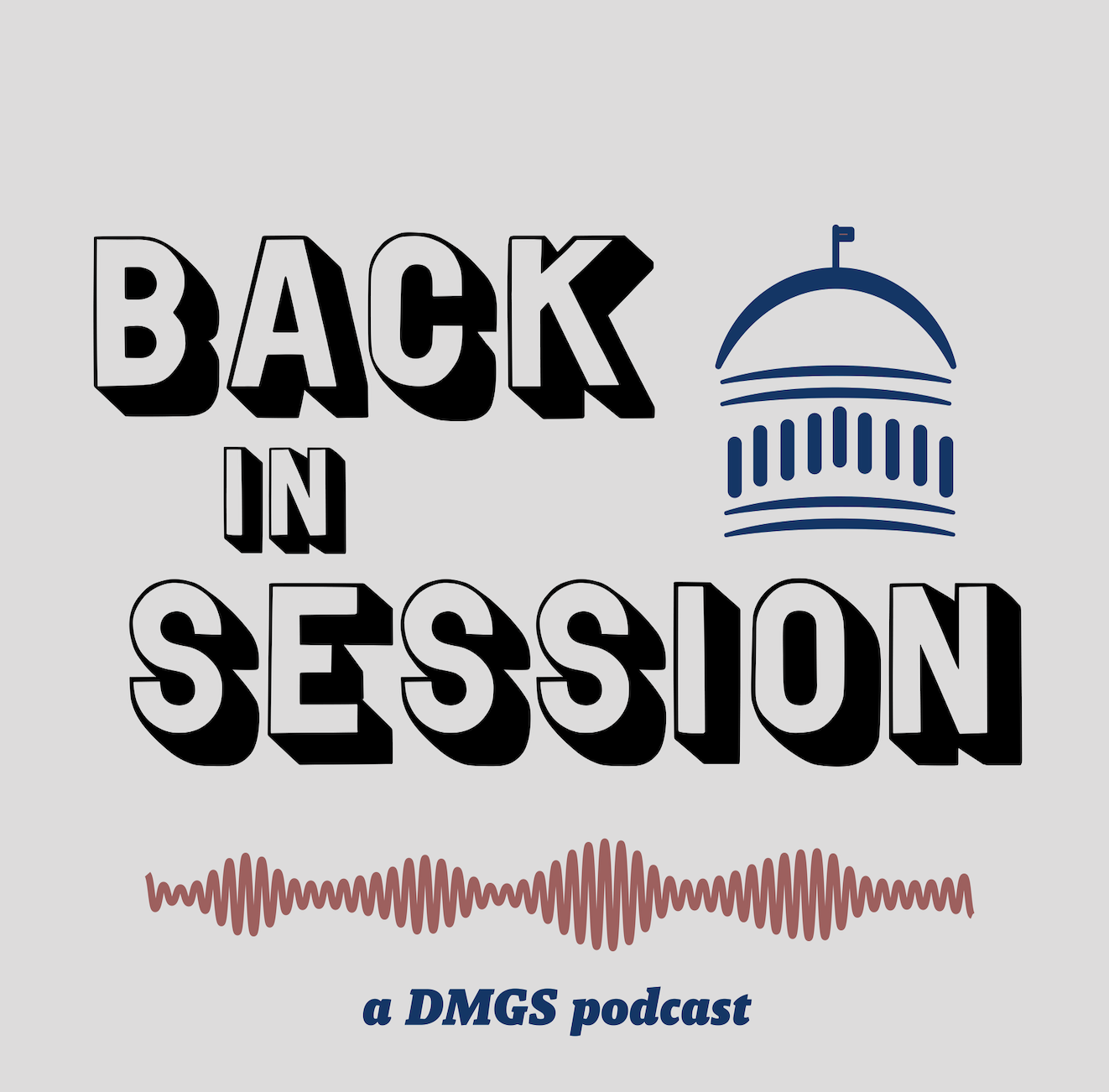
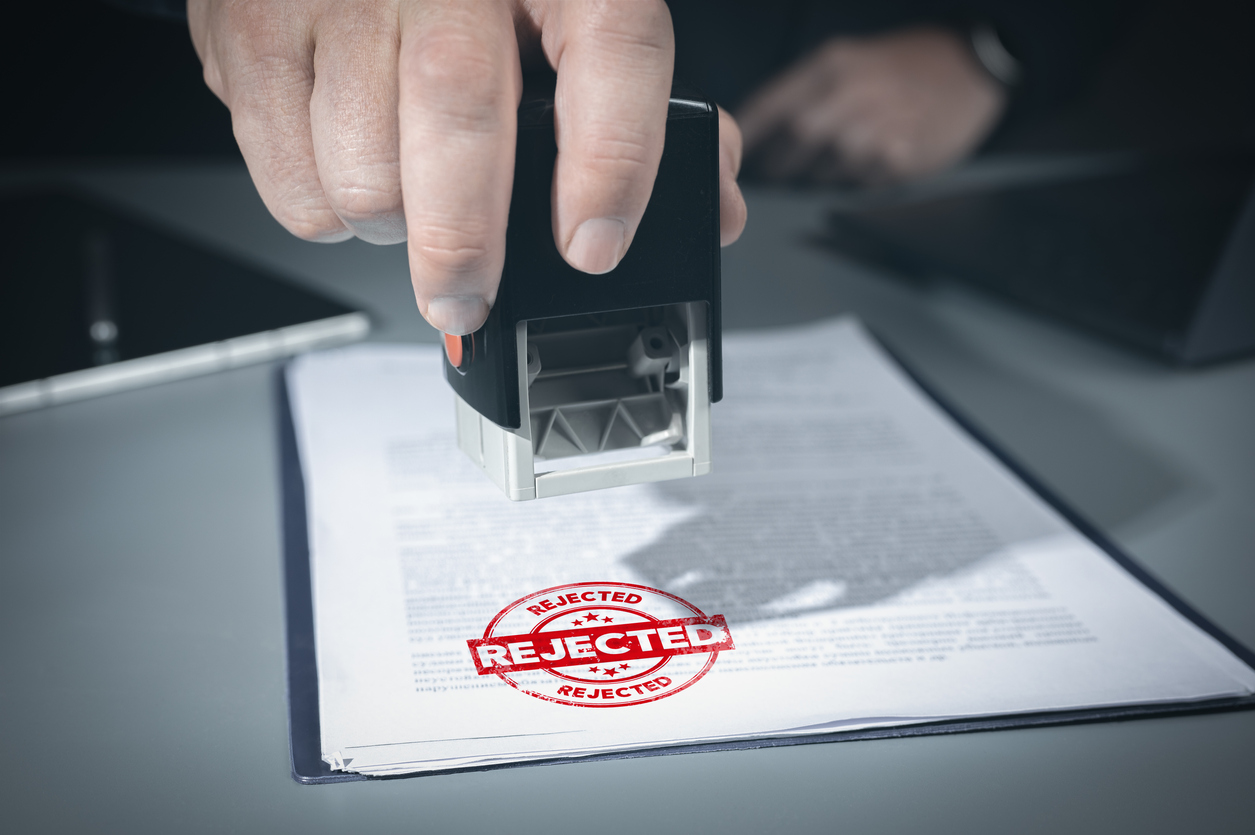

Stay In Touch